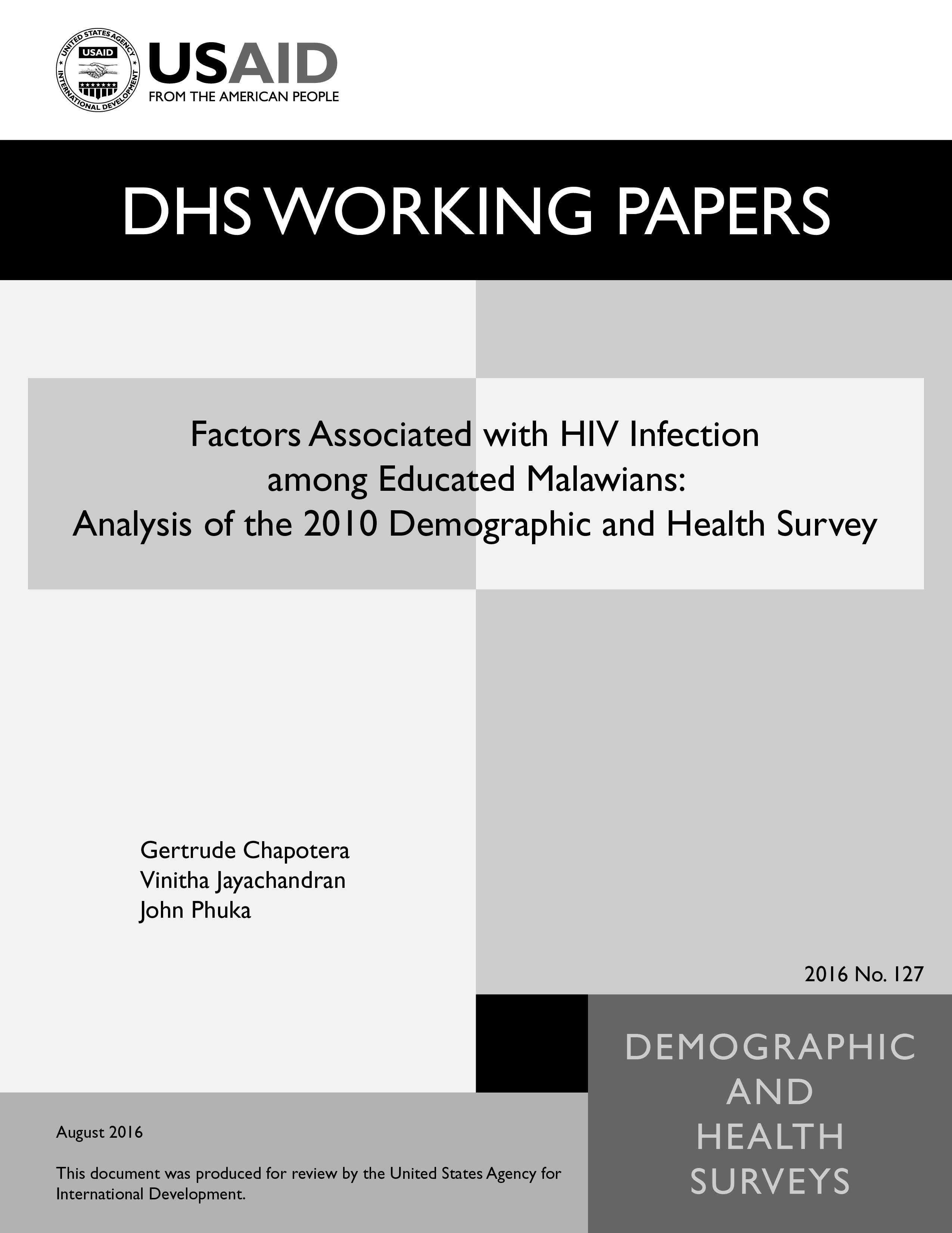
Abstract:
Introduction: Among people who have ever
attended school, higher educational
attainment appears to be associated with
higher prevalence of HIV. This study assesses
the association between education and HIV
status in Malawi, among individuals with some
education, after adjusting for various
background characteristics.
Methods: We used nationally representative
data from the 2010 Malawi Demographic and
Health Survey (MDHS). A weighted total of
5,092 women age 15-49 and 5,460 men age 15-54
who were tested for HIV and ever had sex were
included in the analysis. Multiple logistic
regressions were used to explore the
association between HIV status and
educational attainment, as well as other
factors.
Results: Among women with a secondary
education, compared with women with a primary
education, the unadjusted odds ratio of
testing HIV-positive was 1.6. Men with a
secondary education had 1.1 higher odds of
testing HIV-positive compared with men with a
primary education. Among women with a
tertiary education, compared with women with
a primary education, the odds ratio was 1.5,
and among men it was 1.7. The association of
HIV prevalence with education, however, was
no longer significant in the models
controlling for variables related to high-
risk behaviors, access to health care
services, and partner and demographic
characteristics. Adjusted models showed
significantly increased odds of HIV
associated with a higher lifetime number of
partners, marriage status, comprehensive
knowledge of HIV/AIDS among men but not
women, older age, urban residence, residence
in the Southern Region of Malawi, higher
wealth status, higher occupation rank, and
among women but not men.
Conclusion: Education was not found to be
associated with being HIV-positive, but
lifetime number of sexual partners, age,
residence, and wealth status may be important
factors associated with HIV seropositivity.
Except for lifetime number of sexual partners
and marital history, the other factors that
are most likely to be associated with HIV
seropositivity reflect survival rates related
to knowledge and access to care. Individuals
with higher education may live longer with
HIV infection than individuals with lower
educational attainment, resulting in higher
HIV prevalence among the educated, even if
their infection rates are not as high. Our
findings perhaps suggest a need for better
education on HIV/AIDS and better health
practices, while further supporting avoidance
of risky behavior.
 Factors Associated with HIV Infection among Educated Malawians: Analysis of the 2010 Demographic and Health Survey (PDF, 424K)
Factors Associated with HIV Infection among Educated Malawians: Analysis of the 2010 Demographic and Health Survey (PDF, 424K)
